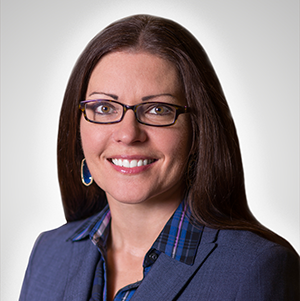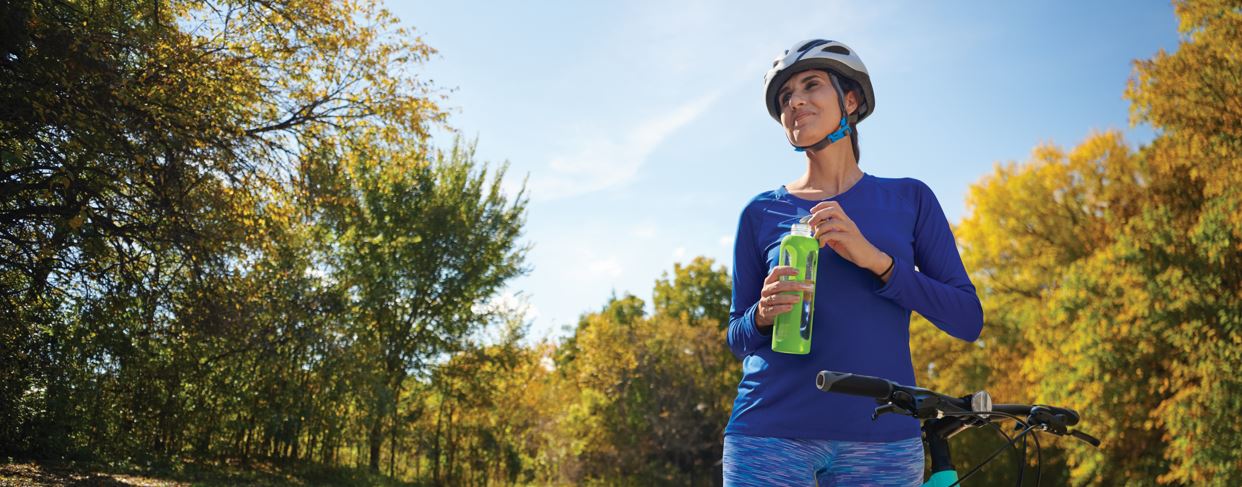The older we get, the more the wear-and-tear of daily living affect parts of the body. The back is particularly vulnerable. Almost every full-body motion made in the course of your day – standing up, sitting down, walking, bending over – puts stress on the spine. By age 50, up to 95% of all people will have some type of degenerative changes in the spine.
One age-related condition that affects the back is spinal stenosis – a condition in which the spinal canal narrows, creating pressure on the nerves.
 “Spinal stenosis can occur in any area of the spine – the cervical, thoracic or lumbar spine,” said Dr. Jessica Shellock, a spine surgeon on the medical staff at Texas Health Center for Diagnostics and Surgery in Plano, TX. “It's most common in the cervical and lumbar spines, especially with aging and the degenerative spinal conditions, because those are the areas that see the most mobility.”
“Spinal stenosis can occur in any area of the spine – the cervical, thoracic or lumbar spine,” said Dr. Jessica Shellock, a spine surgeon on the medical staff at Texas Health Center for Diagnostics and Surgery in Plano, TX. “It's most common in the cervical and lumbar spines, especially with aging and the degenerative spinal conditions, because those are the areas that see the most mobility.”
Most patients with spinal stenosis are 60 or older, although a small number of people may have congenital spinal stenosis, due to problems that were present at birth. Those with this congenital condition usually first notice symptoms between the ages of 30 and 50.
What Causes Spinal Stenosis
Your spine is made up of small bones, called vertebrae, stacked on top of one another, and surrounded by muscles, ligaments and nerves. Intervertebral discs are located between the vertebrae, acting like shock absorbers.
Spinal stenosis occurs when the space around the spinal cord and spinal nerves narrows. This puts pressure on the spinal cord and the spinal nerve roots, and may cause pain, numbness, or weakness in the legs.
Degenerative changes of the spine are the most common causes of spinal stenosis. As we get older, the discs begin to dry out and weaken. The disc space may collapse, leading to a “bulging” disc. Arthritis may alter the facet joints (pairs of joints between the vertebrae) and the ligaments may thicken. One or more these age-related changes can lead to crowding of the space for the nerves, resulting in spinal stenosis and often pain or weakness in the affected area.
Symptoms of Spinal Stenosis
The symptoms of spinal stenosis vary depending on what part of the spine is affected.
“Lumbar spinal stenosis affects the lower back, and often presents with leg pain along with a history of inability to stand or walk distances,” said Dr. Shellock. “In many cases, patients find their pain improves when they sit down.”
Pain due to lumbar spinal stenosis may worsen when the patient stands up straight and walks. Some people can ride a stationary bike, or walk leaning on a shopping cart, without pain, but then find that walking just a few blocks may bring on severe sciatica or weakness.
With cervical spinal stenosis – which affects the neck area – the symptoms tend to be different.
“With this type of stenosis, the spinal cord is compressed, which can trigger neurological symptoms called myelopathy,” Dr. Shellock said. “Instead of pain in the lower extremities, patients may experience clumsiness, gait disturbances and balance disturbances, which can affect both the upper and lower extremities.”
Other possible symptoms of spinal stenosis may include:
*Back pain
*Burning pain in the buttocks or legs (sciatica)
*Numbness or tingling in buttocks or legs
*Weakness in the legs, foot drop (difficulty lifting the front part of the foot) or a feeling that their foot slaps on the ground while walking
Some rare symptoms of spinal stenosis can be considered a medical emergency. These include sudden loss of bowel and/or bladder control; or weakness in the legs that makes walking impossible. Anyone experiencing these symptoms should see medical attention right away.
Diagnosing Spinal Stenosis
If you’re experiencing symptoms that might be due to spinal stenosis, your first step is an appointment with a spine surgeon. The doctor will ask about your symptoms, take a medical history, and examine your back. The exam will involve looking at your back and pushing on different areas to see if it hurts. Your doctor may have you bend backward, forward and side-to-side to determine what movements cause pain, or where your range of motion may be limited.
Depending on what your exam reveals, the doctor may order one or more imaging tests, such as:
X-rays. X-rays only visualize bones but can help determine if you have spinal stenosis. They will show aging-related changes, like loss of disc height or bone spurs. X-rays can also show when there is too much mobility in your spine, a condition called spondylolisthesis.
Magnetic resonance imaging (MRI). An MRI offers a better look at soft tissues, such as muscles, discs, nerves, and the spinal cord.
Computed tomography (CT). CT scans create cross-section images of your spine and show the bony structures better than X-rays.
Myelogram. A myelogram involves injecting dye into the spine to make the nerves show up more clearly, so that the doctor may determine whether the nerves are being compressed.
Treatment Options for Spinal Stenosis
Spinal stenosis can be treated in a variety of ways including physical therapy, medication, and surgical intervention like a laminectomy/discectomy, endoscopic spine surgery or spinal fusion.
In most cases, the treatment plan begins with nonsurgical options focused on restoring function and relieving pain. These may include physical therapy (stretching and strengthening exercises, massage) and non-steroidal anti-inflammatory drugs (NSAIDs) such as aspirin, ibuprofen, and naproxen. If those don’t work, a course of oral steroids may be recommended.
Another option is steroid injections to decrease swelling, as well as pain. The injections can also reduce numbness, but not weakness, in the legs. Patients should receive no more than three injections per year.
“Some patients can benefit from spinal injections, which may provide some improvement symptomatically, allowing them to be more functional,” said Dr. Shellock.
Spine Surgery for Spinal Stenosis
Spine surgery may be recommended for patients who have tried nonsurgical treatments, with no relief, and who have poor quality of life due to pain and weakness, including difficulty walking for extended periods of time.
“From a surgical standpoint, depending on the complexity of an individual situation, options may include simply opening the space up with a procedure called a surgical laminectomy or decompression,” said Dr. Shellock. “But surgery may also involve stabilizing the affected segment of the spine by fusing or placing screws and rods to make sure that there's no abnormal motion.”
Laminectomy is a procedure to remove the bone, bone spurs and ligaments that are compressing the nerves. This procedure is also called a decompression. Laminectomy can be performed as open surgery, in which the spine surgeon uses a single, larger incision to access the spine. The procedure can also be done using a minimally invasive method, with smaller incisions. Ultra-minimally invasive surgery, using endoscopic surgical techniques, may allow for an even smaller incision and shorter recovery time. The surgeon uses an endoscope, a small camera that’s worked through the body in a tube. The camera guides the surgeon as he or she works.
Spinal fusion is another type of spine surgery that may be recommended if arthritis has progressed to the point where the spine is instable. This involves uniting (fusing) the vertebrae above and below the disc into one solid piece of bone. Fusion surgery does involve some risk but can provide substantial benefit. There are many surgical approaches and methods available to fuse the spine. All involve placement of a bone graft between the vertebrae. In some cases, the surgeon may use supplemental hardware such as plates, screws and cages, which acts an internal splint to hold the vertebrae together while the bone grafts heal.
Patients typically stay in the hospital for one to two days after fusion surgery. Fusion requires a longer period for recovery compared to other types of spinal surgery; a fusion generally takes 9 to 12 months to fully heal. Patients’ activities will be restricted during all or part of this healing period. The total time for recovery varies with the patient’s age and other health factors.
Choosing the right surgical option for treating spinal stenosis is an important decision which the patient and surgeon make together.
“The best surgical option will depend on the individual patient’s symptoms and the findings from an imaging study, such as an X-ray or MRI,” said Dr. Shellock. “A patient should discuss their options thoroughly with their physician to decide which procedure is best.”
If you or someone you know is suffering from spinal stenosis, take the next step and make an appointment with an experienced spine specialist. Our patient navigator is standing by to help you find the doctor that is right for you! Call or email today.
Texas Health Center for Diagnostics & Surgery is a surgical hospital serving the people of Collin, Dallas and Denton counties. The hospital is an award-winning facility that offers a wide range of services including robotic surgery, spine surgery, joint replacement surgery, orthopedic surgery, gynecological surgery, urological surgery, ENT surgery as well as spinal injections, outpatient GI procedures and advanced imaging studies.
